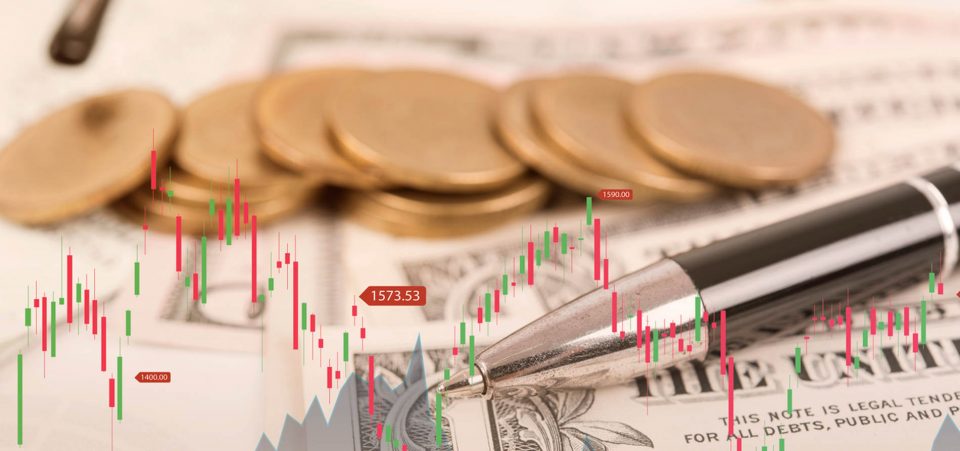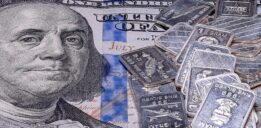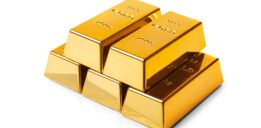Expect Gold Price to Reach $1,350 to $1,400 an Ounce in 2018
The gold price forecast for 2018 cannot but be bullish. It would be reasonable to expect gold prices in 2018 to range in an area between $1,350 and $1,400 per ounce.
The gold price predictions for 2018 vary. But, if you avoid unnecessary departures of logic, the level of uncertainty is such that gold prices in 2018 could be even higher than $1,400 per ounce. Gold cannot but increase its appeal in the face of the high uncertainty caused by Brexit. It’s far from over and Theresa May’s government, even after an election, remains on the edge of the cliff.
The U.K. will likely endure another election. It could take place next fall, before the end of the year. Meanwhile, the migration crisis in the Mediterranean has pitted Italy; one of the European Union’s founding members, against the rest. The unregistered (illegal) migrants arrive by the thousands every single day. What does this have to do with gold price trends? Quite a bit, it turns out.
Rescue ships from the national navies or coast guards of various nations—complemented by the efforts of do-gooders from NGO’s—pick up the migrants near the Libyan coast now. This encourages the phenomenon. But the ships promptly deposit the migrants—very few would actually qualify as political refugees—at Italian ports.
The situation is putting pressure on citizens and politicians. It will no doubt force the calling of a general election in 2017 or 2018. The parties that have criticized the illegal migration problem could score a major win. But, it so happens that such parties are the same that advocate Italy quit the EU if the rest of its members refuse to take in migrants and share the problem.
Meanwhile, in the United States we have CNN pursuing a political witch hunt against Russia and anyone, it seems, in Washington that may or may not have entertained cordial relations, business, or political exchanges with Russian citizens.
The media is putting pressure on President Donald Trump to deviate from his plans to establish a closer relationship with Russia—lest anyone forget, a major nuclear power. One of the potential victims of the media’s and much of Congress’s anti-Russian efforts is to weaken the tacit agreement for the U.S. or NATO to interfere in Syria’s political arrangements.
Trump has conceded that Russia has a vital interest in maintaining Asad in power in Damascus. President Macron of France also agrees. But, CNN does not; and neither do many influential but intrusive members of Congress, from Senator McCain to Chuck Schumer. This messy political soup is just starting to simmer now. It could reach a boil by New Year’s Eve 2017. This is bad for politics but good for the gold price outlook.
If 2017 has been eventful, 2018 promises to be even more so. The financial world has experienced almost 10 years of a bull market. As a result there are analysts, bankers, and investors who have known nothing but gains and nothing but near-zero interest rates. The trend has taken such root that it has prevented the Federal Reserve from upholding, let alone championing, its much publicized plans to raise the nominal interest rate.
The Fed has made three consecutive interest rate hikes since late 2015. That has pushed them to one percent. But Chair Janet Yellen, seemed uncertain herself that raising rates might be the best policy. (Source: “US stocks, bonds jump on Fed chief Janet Yellen’s remarks; oil climbs,” Live Mint, July 12, 2017.)
The fact that Yellen made it rather clear that the economy is too weak to absorb another rate hike should have sent markets tumbling. Instead, investors, in zombie mode and apparently not willing to believe in anything but the bull market, rushed to buy more. What should have been a sell-off became a shopping spree on Wall Street.
In turn, the dollar has suffered, losing ground to major currencies. But, not surprisingly, gold, which attracts a more conservative type of investor—the kind that has seen it all—started to move up. At the time of writing, the gold price per ounce was trading at about $1,245. It has managed to gain some $30.00 in a matter of three or four trading days. There is uncertainty in the air, and the gold price, as usual, reflects this.
Everything Points to Gold Prices Increasing Regardless of the Fed
Gold has actually pulled off a remarkable recovery. Despite reduced price pressure, given the bullish stock market (gold tends to go up when stocks are down) and what might even be a negative environment, gold is moving higher. It’s true that the Fed’s capping of the interest rate hike program has contributed to accelerating gold’s recovery.
But, the medium- and long-term financial (stock market crash), economic (major recession), and geopolitical (conflicts with Russia, China, North Korea, Iran) risks are such that the long-term gold price forecast is bullish. As a safe haven and value deposit, gold should continue to appreciate during the second half of 2017 in the range of $ 1,250-$1,300. But that’s a conservative estimate.
There is potential for prices to hit $1,400 or even $1,450 after the summer. That’s when various political “equations” will be begging to be solved as this chart pattern suggests:
If Europe doesn’t solve the migration crisis by then, there is the risk of a massive revolt in Italy. That could shake up the very foundations of the European Union, given that Italy is one of the original members of the European political and economic project. That said, even if Italy manages to secure more cooperation from its neighbors and from Brussels, migrants are going to influence—even indirectly—politics in other EU states.
The Patterns Suggest a Higher-Than-Expected Gold Price in 2018
Meanwhile, there are already patterns developing that should sustain gold prices in 2017 and 2018. The U.S. dollar has shown itself rather weak lately. The weakness of the U.S. currency has helped boost the precious metal over the past week in the international market. Standard Chartered Bank has updated its gold price forecast and improved its forecast from $1,200 to $1,300 an ounce for the fourth quarter of 2017.
It seems hard to believe. Considering that the gold price per ounce has not traded higher than $1,300 since 2016, few would expect it to reach $1,350, let alone higher, by 2018. According to the report by Standard Chartered, there is a greater chance that the gold price will close the year at $1,300 per ounce rather than $1,200. (Source: “Standard Chartered Looks For $1,300/Oz Gold In 4Q,” Kitco, June 21, 2017.)
The gold price is more likely to exceed $1,300 an ounce to take a bearish trend. The fact that the Standard Chartered report was published before the Fed made it clear it would be much more cautious about raising interest rates only makes the $1,300-per-ounce mark more credible. There are, of course, other factors affecting gold prices.
These range from production shortfalls to yields on U.S. Treasury bonds and taxes on goods and services. For example, Indian authorities have considered enforcing such a tax. But while such a tax applied to gold in India could pose a problem, since its application in June, it has not. Indeed, is going to be more of a temporary obstacle than a structural impact on demand. (Source: “PRECIOUS-Gold price rises to two-week high as dollar slides,” Reuters, July 18, 2017.)
Among the factors that may lead to a fall in gold prices is the reduction of the Federal Reserve’s balance sheet. Then there are also other potential obstacles including the slowdown in inflation, the reduction in demand in India, beyond administrative risks. Should such factors start to have an effect—which should keep gold prices at around $1,200 per ounce—they are no match for the tremendous political risks in 2017, which could overflow into 2018.
Moreover, even if Janet Yellen changes her mind, the U.S. Federal Reserve rate hikes have shown they are ineffective. They are no longer crucial to establishing significant declines or upswings in gold prices. Yes, gold did pick up after the Fed “assured” the markets it would be more cautious about hikes. But, even when investors expected interest rate increases, the gold price outlook remained above $1,200 per ounce. Thus the price floor for gold has gotten higher.
The Federal Reserve is expected to hold its third rate hike debate before the end of 2017. But, by then, there may have already been a major stock market crash—or a major market correction. The signs of weakness, despite the Dow Jones reaching for new records are strong. Trump continues to face pressure. The president cannot push through his economic agenda of lower taxes.
Frankly, there’s little the president can do while his legitimacy continues to be questioned. Thus, there are serious doubts that there will be more rate hikes during 2017 or 2018. Few are optimistic that the Trump administration will be able to push through its fiscal stimulus policy any more. This should weaken the markets and keep the gold price range much higher than anyone had expected.







